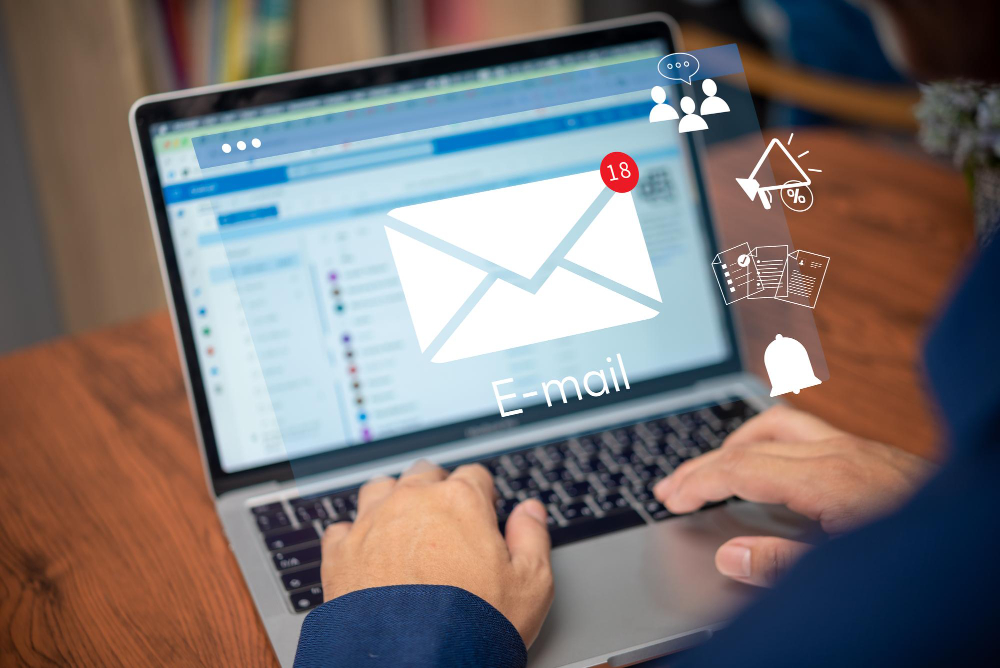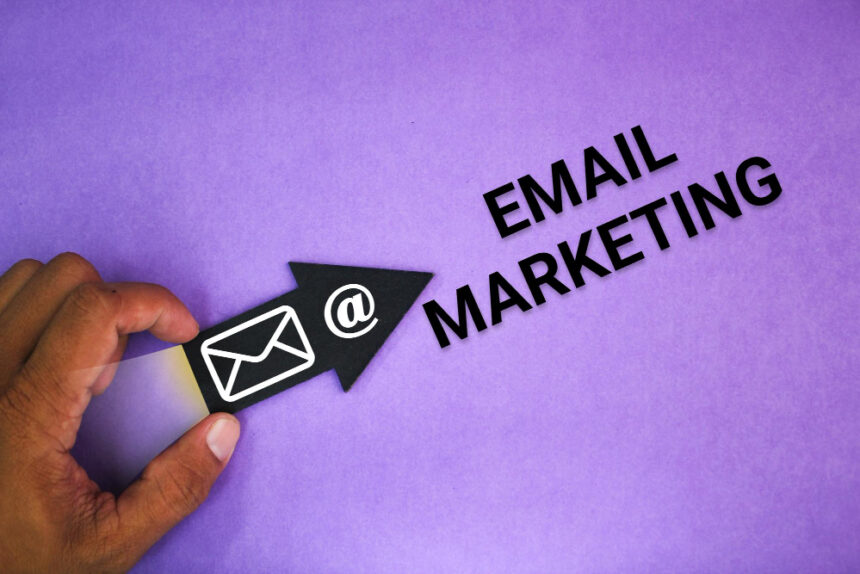In today’s hyper-competitive digital landscape, where trends shift overnight and consumer attention spans dwindle by the second, businesses need a reliable and high-impact channel to reach their audience. One strategy continues to deliver strong results year after year, regardless of shifting algorithms or social media fads email marketing. Often underestimated or improperly used, email marketing remains one of the most powerful tools for business growth, customer engagement, and long-term success.
Whether you’re a startup looking to establish a loyal customer base or a seasoned business aiming to boost conversions and customer retention, a well-crafted email marketing strategy can make all the difference. With relatively low costs, measurable results, and high return on investment (ROI), it’s not just another piece of the digital marketing puzzle—it’s the cornerstone of sustained business success.
Why Email Marketing Still Reigns Supreme in the Digital Era
With the rise of social media, influencer campaigns, and AI-driven advertisements, it’s easy to assume that email might be outdated. However, the statistics tell a different story. Email marketing boasts an impressive ROI—averaging $42 for every $1 spent. Unlike other platforms, where visibility is at the mercy of algorithms, email puts businesses directly in front of their audience. When a subscriber opens their inbox, your message isn’t buried beneath a dozen posts or competing hashtags—it’s front and center.
What makes email particularly powerful is its direct nature. It’s personal. It’s permission-based. The people who receive your emails have already expressed interest in your business, which makes them significantly more likely to engage, respond, and convert. Additionally, email is universal. Nearly everyone has an email address, and it remains the primary channel for professional communication worldwide.
Building a Strong Foundation: Why Every Business Needs Email Marketing
For a business to grow, it must not only attract new customers but also retain them. That’s where email marketing shines. Unlike fleeting social media posts or expensive ad campaigns, email creates a direct and ongoing relationship with your audience. You’re not just sending promotions—you’re building trust, providing value, and guiding prospects through the customer journey.
With a solid email list, you own your audience. You’re not dependent on rented platforms like Facebook, Instagram, or TikTok, where changes in policies or algorithms can derail your strategy overnight. Your email list is a business asset—an investment that continues to pay dividends as your brand grows.
Email marketing also enables targeted segmentation. You can tailor your messages based on user behavior, purchase history, preferences, or engagement level. This ensures that every message feels relevant and personal, increasing the chances of a successful conversion.
Growing Your Email List: Strategies That Work
An effective email marketing campaign starts with a robust and engaged list. But how do you grow your email list ethically and effectively? It begins with providing genuine value. Offering a lead magnet—like a free guide, discount code, or exclusive content—in exchange for an email address can be a highly effective tactic. When people see that subscribing to your emails benefits them, they’re more likely to opt in.
Website pop-ups, embedded sign-up forms, and content upgrades can help convert visitors into subscribers. But remember, the goal is quality over quantity. It’s better to have 1,000 engaged subscribers than 10,000 uninterested ones. Your content and offers must align with what your audience truly needs and values.
Hosting webinars, free trials, and special events also works wonders for list-building. Each interaction offers a chance to collect email addresses and deepen the relationship with potential customers.
Crafting the Perfect Email: Elements That Drive Engagement
Once you’ve built your list, it’s time to focus on your email content. Every email you send should have a clear purpose. Whether it’s to educate, promote a product, drive traffic to your blog, or simply nurture your audience, your emails need to deliver value.
Subject lines are your first impression. They need to be compelling enough to prompt an open, but not so gimmicky that they come across as spammy. Once opened, the body of your email should be engaging, well-written, and visually appealing. Use a conversational tone to make your message feel more human and relatable.
Visuals can help break up text and make your emails more digestible, but don’t overdo it. A cluttered email can be overwhelming and may not render correctly on all devices. Keep mobile users in mind, as a significant portion of email opens happen on smartphones.
Don’t forget your call to action (CTA). Whether it’s “Shop Now,” “Read More,” or “Claim Your Offer,” your CTA should be clear, compelling, and easy to spot. Each email should drive the recipient toward a specific action that aligns with your business goals.
Email Marketing Automation: Scale Without Sacrificing Personalization

As your business grows, manually managing every aspect of email marketing becomes impractical. That’s where automation comes into play. Automated email workflows allow you to send the right message to the right person at the right time—without lifting a finger.
You can set up welcome series for new subscribers, cart abandonment emails for online shoppers, re-engagement campaigns for inactive users, and much more. These automated flows not only save time but also improve the customer experience by delivering timely and relevant messages.
Advanced email platforms also offer behavioral triggers. For instance, if a customer clicks on a specific product in your email, you can automatically send a follow-up with similar recommendations or a limited-time discount.
This level of personalization is what sets email marketing apart. It allows businesses to scale their communications while maintaining a one-to-one feel—a critical factor in building lasting customer relationships.
Measuring Success: Key Email Marketing Metrics to Watch
You can’t improve what you don’t measure. Fortunately, email marketing provides a treasure trove of data. By tracking key metrics, you can assess the effectiveness of your campaigns and make data-driven decisions to optimize performance.
Open rate is one of the most basic yet important metrics—it tells you how many recipients actually opened your email. While open rates are influenced by subject lines and sender reputation, click-through rate (CTR) shows how compelling your content and call-to-actions are.
Conversion rate takes things a step further by measuring how many recipients completed a desired action after clicking. This could be a purchase, a sign-up, or a download, depending on your campaign goals.
Other valuable metrics include bounce rate (the percentage of emails that couldn’t be delivered), unsubscribe rate, and email sharing/forwarding rate. Analyzing these numbers helps you understand what’s working, what’s not, and how to fine-tune your email marketing efforts.
Avoiding the Spam Folder: Best Practices for Deliverability
One of the biggest challenges email marketers face is ensuring their emails actually land in inboxes—not spam folders. To protect your deliverability, always obtain permission before emailing anyone. Buying email lists or sending unsolicited messages can quickly damage your sender reputation and violate laws like the CAN-SPAM Act or GDPR.
Use a reputable email service provider (ESP) and regularly clean your list to remove inactive or invalid addresses. This helps maintain high engagement and reduces bounce rates. Also, avoid spam trigger words like “Buy now!” or “Make money fast,” especially in subject lines.
Authentication protocols like SPF, DKIM, and DMARC improve your email’s credibility and trustworthiness with Internet Service Providers. The goal is to be seen as a reliable sender with valuable content—not a spammer pushing unwanted promotions.
Advanced Segmentation: Personalization Beyond the First Name
Today’s consumers expect more than generic mass emails. They want content tailored to their interests, behavior, and needs. Segmentation allows you to divide your email list into smaller groups based on various criteria such as demographics, past purchases, website activity, or engagement level.
For instance, a returning customer might receive a loyalty reward email, while a new subscriber could get a welcome sequence introducing them to your brand. Someone who browsed a specific product category could receive personalized recommendations related to their interests.
The more relevant your emails are, the higher your engagement and conversion rates will be. Personalization fosters loyalty and makes your subscribers feel seen and valued. And thanks to modern email marketing platforms, it’s easier than ever to implement.
The Role of Email Marketing in the Customer Journey
Email marketing doesn’t exist in a vacuum—it plays a vital role throughout the entire customer lifecycle. From awareness to consideration, purchase, and beyond, email helps nurture prospects and deepen relationships with existing customers.
At the awareness stage, you can introduce your brand, share helpful content, and invite readers to explore more. During consideration, offer testimonials, case studies, or comparisons to help prospects make informed decisions. Post-purchase emails can include order confirmations, shipping updates, and product care tips to enhance the customer experience.
Loyalty and advocacy are the ultimate goals. Regular updates, exclusive offers, and referral incentives can keep customers engaged long after their initial purchase. In this way, email marketing supports not just short-term conversions but long-term business growth.
Mobile Optimization: Don’t Overlook the Small Screen
With mobile devices accounting for over half of all email opens, optimizing for mobile is no longer optional—it’s essential. A poorly formatted email on mobile can lead to frustrated readers, missed opportunities, and high unsubscribe rates.
Make sure your emails are responsive, with layouts that adapt seamlessly to different screen sizes. Use larger fonts for readability, and keep important elements—like your CTA—easily tappable. Shorter paragraphs and concise copy also improve readability on mobile.
Test your emails across various devices and email clients before sending. A seamless mobile experience enhances user satisfaction and increases the chances of achieving your email marketing goals.
Integrating Email with Other Marketing Channels
Email marketing is powerful on its own, but it becomes even more effective when integrated with other marketing strategies. You can use email to amplify your content marketing by sharing blog posts, videos, or podcasts directly with your subscribers.
If you’re running a social media campaign or paid ad promotion, reinforce it through email. This omnichannel approach ensures consistent messaging and increases touchpoints with your audience.
CRM integration also adds value by syncing customer data, allowing for more advanced personalization and automation. The result is a more holistic and efficient marketing ecosystem that drives growth from every angle.
The Future of Email Marketing: Trends to Watch
Email marketing continues to evolve, and staying ahead of the curve is crucial for long-term success. One emerging trend is the use of interactive emails, which include elements like polls, image carousels, or embedded videos that allow subscribers to engage without leaving their inbox.
AI and machine learning are also reshaping the landscape. From predictive analytics to intelligent send-time optimization, technology is enabling smarter, more efficient campaigns. Personalized content generation and dynamic product recommendations are just the beginning.
Sustainability and privacy are becoming key concerns as well. Consumers want transparency and control over their data. Ethical email practices, strong privacy policies, and honest communication will help build trust in the years to come.
Email Marketing Is a Business Growth Engine
Email marketing remains a cornerstone of digital success for good reason. It offers unmatched ROI, incredible reach, and the ability to nurture relationships at scale. For businesses willing to invest in strategy, creativity, and personalization, the rewards are substantial.
As competition grows fiercer and advertising costs climb, owning a direct line of communication with your audience is more valuable than ever. Email marketing not only helps you stay connected but empowers your business to grow sustainably and profitably.
Whether you’re just starting out or looking to optimize your current strategy, now is the perfect time to unlock the full potential of email marketing. Embrace its power, adapt to evolving trends, and watch your business thrive.

